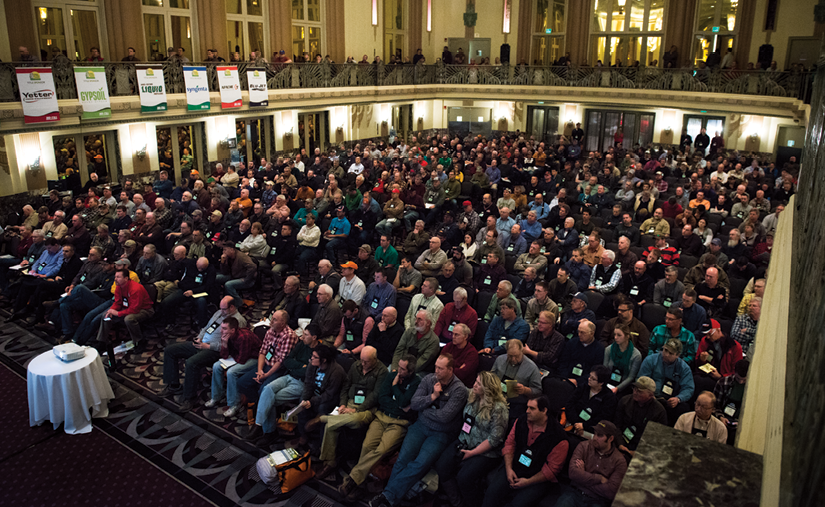No-Till Farmer
Get full access NOW to the most comprehensive, powerful and easy-to-use online resource for no-tillage practices. Just one good idea will pay for your subscription hundreds of times over.

Nearly 1,000 No-Tillers made the trek to Cincinnati this January to listen to top-notch soil health scientists and no-till experts, network with fellow growers, and take away valuable information and insights for building better no-till practices on their operations at the National No-Tillage Conference.
The 2015 event in the Queen City saw the third highest attendance of the conference’s 23 years, with an official 943 attendees — Indianapolis saw a 1,154 attendance in 2013, and last year’s event in Springfield, Ill., hit 1,024. Of the total attendance, 388 were first-time attendees.
The staff of No-Till Farmer rounded up some of the best no-till tips and insights gleaned from the 17 general sessions and 26 classrooms that were presented over the course of four days. The 24th conference is slated for Jan. 6-9, 2016, in Indianapolis.
Crop modeling is a tool often used to simulate yields based on weather, soil types and management practices. Kenton, Ohio, no-tiller and strip-tiller Brian Watkins takes his farm analysis to deeper levels, drilling down to cost comparisons and paybacks across three tillage systems.
Using his own 7,000-acre corn-and-soybean operation as a template, Watkins crunched the numbers on equipment costs, fertility practices and fuel use for a per-acre assessment of deep tillage, strip-till and no-till. This evaluation — based, in part, on Watkins’ own experiences — revealed distinct financial advantages with no-till, including a $10.69-per-acre cost for fuel vs. $16.97 for conventional tillage.

|
| NO-TILL PAYBACK. Brian Watkins found no-till offers a 23% return |